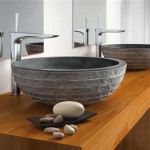Crane Bathroom Sink Colors: A Historical Perspective and Meaning
Crane Co., a well-established manufacturer of plumbing fixtures, produced bathroom sinks in a diverse array of colors throughout the 20th century. These colors, beyond their aesthetic appeal, reflect shifting design trends, technological advancements in manufacturing, and even socio-economic influences of their respective eras. Understanding the historical context and potential meaning behind specific Crane bathroom sink colors provides insight into both the evolution of bathroom design and the cultural landscape that shaped consumer preferences.
The proliferation of colored bathroom fixtures, including sinks, gained momentum in the early to mid-20th century. Prior to this period, white porcelain reigned supreme, symbolizing cleanliness and hygiene, deeply ingrained in societal norms. However, as mass production techniques became more refined and affordable, manufacturers explored possibilities beyond the traditional white, seeking to differentiate their products and cater to evolving tastes. This diversification led to the introduction of a spectrum of colors, each with its own perceived meaning and appeal.
Determining the exact "meaning" of a specific Crane bathroom sink color requires considering several factors. These include the year of manufacture, the target market, contemporary design trends, and common associations linked to specific hues. This article will explore some of the prominent colors used by Crane, analyzing their historical context and potential significance.
The Era of Pastels: Soft Hues and Optimism
The post-World War II era witnessed a surge in optimism and consumerism. The bathroom, previously viewed primarily as a utilitarian space, began to be seen as a personal sanctuary and a reflection of individual style. Pastel colors, evocative of tranquility and serenity, gained immense popularity. Crane capitalized on this trend, offering sinks in various soft shades.
One common color was a light pink, often referred to as "Pink Champagne" or a similar descriptive name. Pink, generally associated with femininity, romance, and gentleness, was a popular choice for bathrooms during this period. It projected an image of domestic bliss and the idealized feminine role that was prevalent in the media and advertising of the time. A pink sink conveyed a sense of warmth and comfort, transforming the bathroom into a more inviting space.
Another prevalent pastel was a light blue, sometimes called "Azure Blue" or "Sky Blue." Blue, frequently linked to tranquility, calmness, and cleanliness, aligned with the desire for a serene and hygienic bathroom environment. Light blue shades evoked feelings of spaciousness and airiness, making the bathroom feel larger and more refreshing. This color was often marketed as universally appealing, suitable for both male and female users.
Mint green was another common pastel color found in Crane sinks. Green, generally associated with nature, growth, and renewal, brought a touch of the outdoors into the bathroom. Mint green, in particular, possessed a fresh and clean aesthetic, aligning with the emphasis on hygiene. It was often marketed as a calming and soothing color, promoting relaxation and well-being.
These pastel colors weren't merely aesthetic choices; they represented a broader cultural shift towards optimism, domesticity, and the pursuit of comfort and personalized spaces. The availability of these colors allowed homeowners to express their individuality and create bathrooms that reflected their personal tastes and aspirations.
Bold Statements: Avocado Green and Harvest Gold
The 1960s and 1970s witnessed a departure from the soft pastels of the previous decades. Earth tones and bolder, more saturated colors gained prominence, reflecting a shift in design sensibilities and a growing awareness of environmental themes. Two colors in particular, avocado green and harvest gold, became ubiquitous in bathrooms across the nation, including those manufactured by Crane.
Avocado green, a deep, earthy green, was a defining color of the 1970s. It symbolized a connection to nature, reflecting the burgeoning environmental movement. The color evoked feelings of health, vitality, and grounding. While some perceived it as dated in later years, avocado green bathroom fixtures were highly desirable during their time, representing a modern and forward-thinking aesthetic. The color was often paired with wood tones and other natural materials to create a warm and inviting bathroom environment.
Harvest gold, a warm, golden yellow, was another popular choice. It conveyed feelings of warmth, optimism, and prosperity. This color was often associated with the harvest season and abundance, reflecting a sense of comfort and security. Harvest gold bathrooms were seen as cheerful and inviting, creating a welcoming atmosphere. The color was also considered versatile, complementing a variety of other colors and design styles.
The prevalence of avocado green and harvest gold reflects a broader cultural shift towards embracing earth tones and a more natural aesthetic. These colors marked a departure from the more overtly feminine pinks and blues of the past, appealing to a wider range of tastes and preferences. The bold nature of these colors also represented a growing confidence and a willingness to experiment with bolder design choices.
Beyond the Mainstream: Rarer and More Specialized Colors
While pastels, avocado green, and harvest gold were the most common colors found in Crane bathroom sinks, the company also offered a range of less common and more specialized colors. These colors often catered to a specific clientele or were used in higher-end models, reflecting a desire for exclusivity and personalization.
Dark blues and greens, sometimes referred to as "Midnight Blue" or "Forest Green," offered a more sophisticated and dramatic look. These colors were often used in more formal or masculine bathrooms, conveying a sense of elegance and refinement. Darker hues also hid stains and wear more effectively, making them a practical choice for high-use bathrooms.
Coral and other variations of orange and red were occasionally offered, adding a vibrant and energetic touch to the bathroom. These colors were often associated with warmth, passion, and creativity. Coral, in particular, was a popular choice in the 1950s and 1960s, reflecting a desire for a more cheerful and optimistic bathroom environment.
Black and other dark neutrals were sometimes available, offering a sleek and modern aesthetic. Black sinks, in particular, were often used in contemporary bathrooms, creating a dramatic and sophisticated look. Neutral colors provided a versatile backdrop for other design elements, allowing homeowners to create a personalized and stylish space.
The availability of these less common colors demonstrates Crane's commitment to catering to a diverse range of tastes and preferences. These colors allowed homeowners to create truly unique and personalized bathrooms, reflecting their individual style and sensibilities. The choice of a less common color often indicated a desire for exclusivity and a willingness to invest in a more distinctive design.
The colors of Crane bathroom sinks serve as a tangible link to the past, offering insights into the design trends, technological advancements, and cultural shifts of their respective eras. Understanding the historical context and potential meaning behind these colors allows for a deeper appreciation of the evolution of bathroom design and the lasting legacy of Crane Co. in the plumbing industry. These colors, beyond their functional purpose, represent a tapestry of societal values, aesthetic preferences, and the enduring human desire for comfort, beauty, and self-expression within the private spaces of our homes.

1951 Crane Maroon Sink

Romantic Reds T Ang Red Rouge Persian And More In Bathroom Fixtures Retro Renovation

The Post War Bathroom

24 Pages Of Vintage Bathroom Design Ideas From Crane 1949 Catalog Retro Renovation

The Post War Bathroom

24 Pages Of Vintage Bathroom Design Ideas From Crane 1949 Catalog Retro Renovation

The Post War Bathroom

24 Pages Of Vintage Bathroom Design Ideas From Crane 1949 Catalog Retro Renovation

24 Pages Of Vintage Bathroom Design Ideas From Crane 1949 Catalog Retro Renovation

Kraus Pu L10sn Bathroom Sink Pop Up Drain With Extended Thread Satin Nickel







